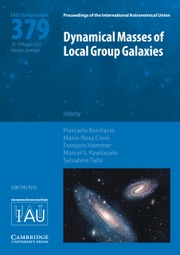No CrossRef data available.
Article contents
High-resolution, 3D radiative transfer modeling of M51
Published online by Cambridge University Press: 09 February 2015
Abstract
We present a new technique developed to model the radiative transfer (RT) effects in nearby face-on galaxies. The face-on perspective provides insight into the star-forming regions and clumpy structure, imposing the need for high-resolution 3D models to recover the asymmetric stellar and dust geometries observed in galaxies. RT modeling of the continuum emission of stars and its interaction with the embedding dust in a galaxy's interstellar medium enables a self-consistent study of the main dust heating mechanisms in galaxies. The main advantage of RT calculations is the non-local character of dust heating that can be addressed by tracing the propagation of stellar radiation through the dusty galaxy medium.
Keywords
Information
- Type
- Contributed Papers
- Information
- Proceedings of the International Astronomical Union , Volume 10 , Issue S309: Galaxies in 3D across the Universe , July 2014 , pp. 310
- Copyright
- Copyright © International Astronomical Union 2015

